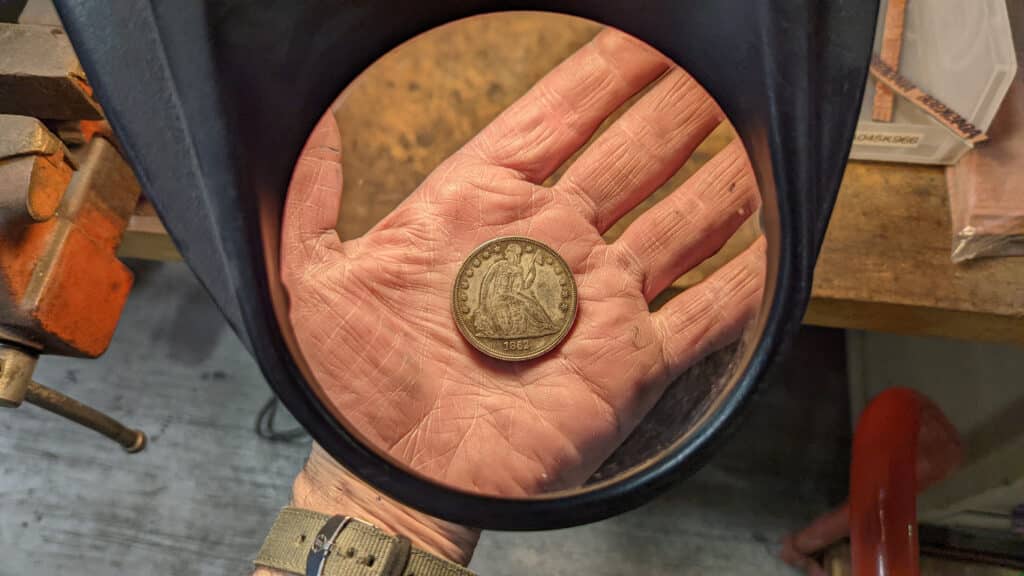One of the questions coin dealers are frequently asked is: “How do you tell if a coin is real?” Unfortunately, there are many unscrupulous people who will take advantage of inexperienced coin collectors, and counterfeiting is a real problem in this industry. In this blog we will give you some tips for determining if a coin is counterfeit or real.
Ways to Determine If a Coin Is Fake
In order to detect a fake, you must have a detailed description of a coin’s real specifications, including size, diameter, thickness, weight, and metal composition. You can find these specifications online. Our recommended websites would be NGC or PCGS. Once you know what you’re looking for, you can determine if the coins match their specifications.
One quick test that anyone can do to determine if a coin is fake is to weigh it. Most governments use extremely precise manufacturing methods for minting coins, so the weight of a coin should match its listed minted weight. Even with wear over time a coin should be very close to its known weight. Use a sensitive scale that weighs in grams and is accurate to within 0.01 grams. If your coin has an odd weight, it’s probably counterfeit. If a coin is heavily worn, it’s not going to weigh exactly, but it won’t be 20% light either.
You can also measure the diameter and thickness of a coin with a high precision caliper. If the measurements are significantly off, the coin may not be real.
If you take a strong magnet, you will be able to see if the coin is attracted to it. If the coin has steel content, it will stick to the magnet. The U.S. Mint only made one coin from steel: the 1943 Lincoln cent. Anything else containing steel will be counterfeit. If the coin is supposed to be silver or gold and sticks to a magnet, we also have problems.
Another potential giveaway is the coin’s color. Check to make sure that it matches the color of this specific coin’s metal composition. Dirt and oxidation will alter the color, but it won’t change it from copper to nickel.
Details, Details
Many counterfeiters will miss small details when they manufacture coins. You should study photographs of genuine coins to learn what different coins look like, including the details of the portraits, the different styles of lettering, and the position of the numbers and other visual details. VAM World is an excellent resource for finding clues left behind from known die pairings. An area most counterfeiters fail to get correct is mint mark shapes and sometimes locations. Pay careful attention to the shape of the mintmark and the serifs of the letter.
Good magnification and bright light will help you see tiny details better. If under magnification these details are not clear or appear soft or indistinct, you may be dealing with a counterfeit coin.
How Do You Tell If a Coin Is Real?
Ultimately, familiarity with the details of genuine coins combined with some knowledge of the tricks of counterfeiters will serve you well – as long as you take the time to study and evaluate the coins you are considering buying. If you would like help locating or buying certain coins for your collection, make an appointment to talk to us today by calling 616-884-5048. We are always available to discuss coins or evaluate coin collections for our customers.

